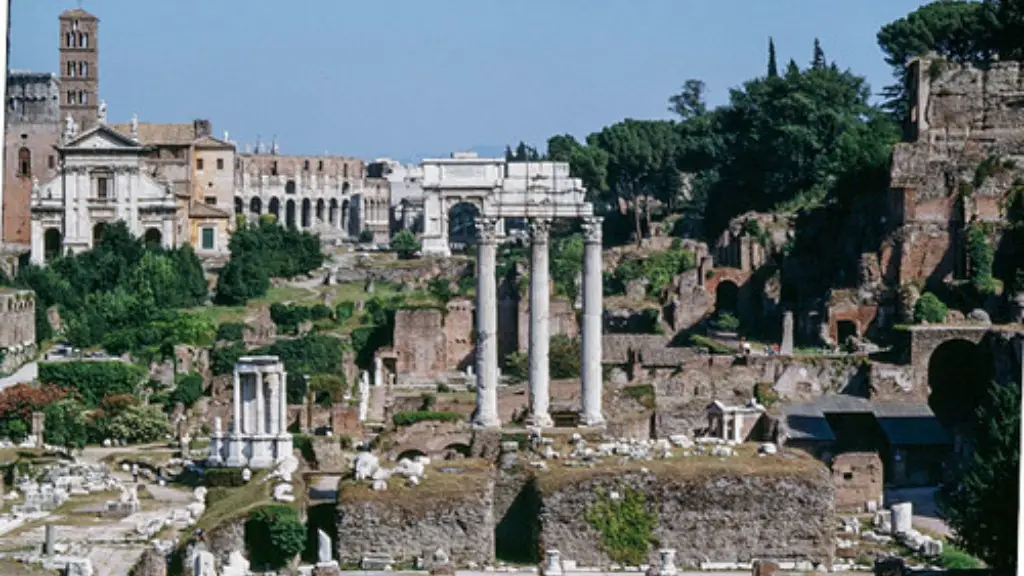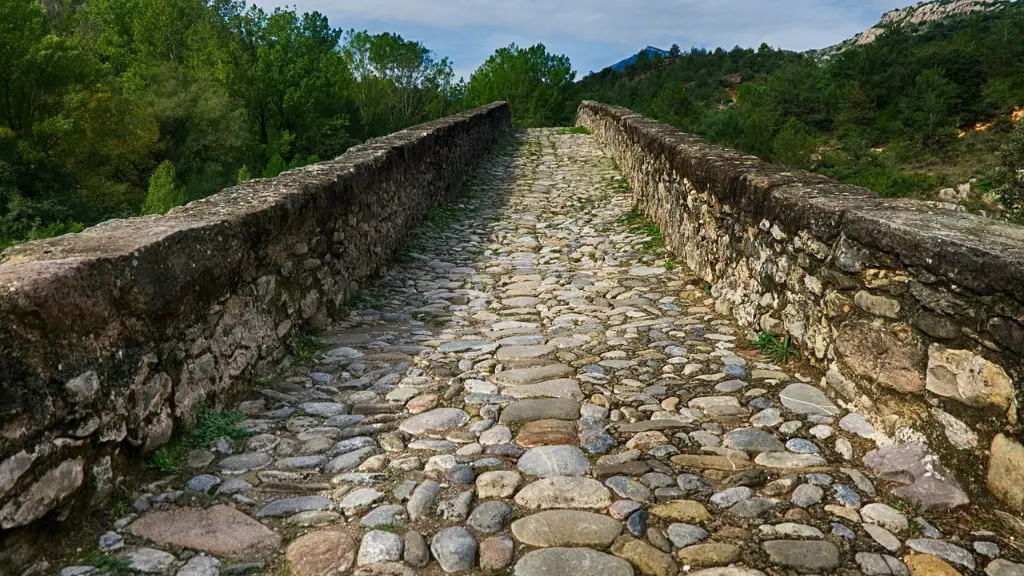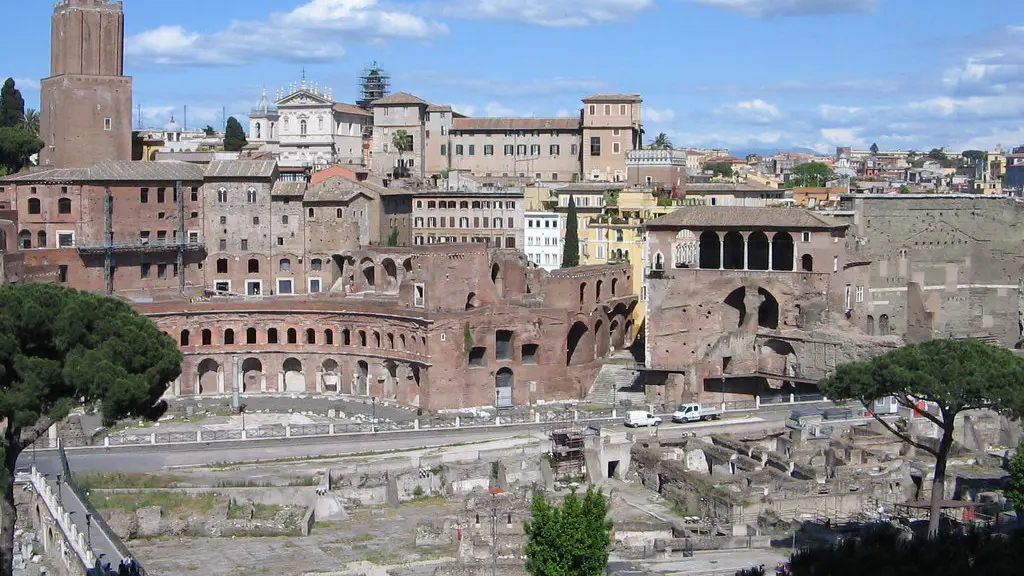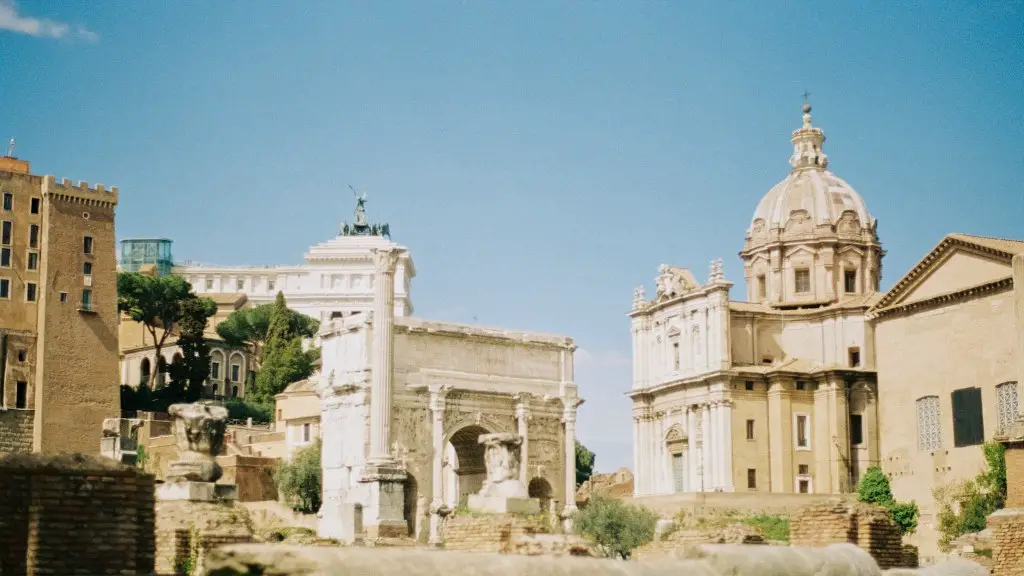Life expectancy in ancient Rome has long been a matter of speculation, with modern estimates ranging widely depending on the sources used. While some sources suggest life expectancy in the ancient Roman Empire was as low as 25 years, others say life expectancy was in fact quite high, approaching 60 years. The reality, however, is likely somewhere in between.
One key factor that affects life expectancy in ancient Rome is the level of medical care available. In the cities of the Roman Empire, medical care was relatively advanced for the era, but in the countryside it was much more primitive. In the cities, individuals would have had greater access to physicians and treatments, and consequently would have enjoyed a higher life expectancy than those in rural areas.
The quality of nutrition was another important element that could affect life expectancy in ancient Rome. In the cities, nutrition tended to be much better, with a wide variety of foods available. This, coupled with the fact that cities had better sanitary conditions, meant that citizens living in the cities were much more likely to reach a ripe old age. Conversely, in rural areas, food was often scarce and sanitation poor, leading to a much lower life expectancy.
Infant mortality was another factor that had a considerable impact on life expectancy in ancient Rome. While modern estimates have put the infant mortality rate in the Roman Empire at around 25%, this number likely varied significantly depending on the regions in which the infants were born. Areas with access to better sanitation, nutrition and medical care likely had lower infant mortality rates, and thus a higher life expectancy.
The prevalence of infectious disease was also an important factor in life expectancy in ancient Rome. Diseases such as malaria, dysentery and typhoid were common in the Roman Empire and could easily spread from region to region. This could lead to large-scale outbreaks, which could drive down life expectancy by several years.
Finally, the life expectancy in ancient Rome was also affected by other factors, such as the prevalence of civil wars and environmental catastrophes. Civil wars could lead to large-scale destruction, which would reduce the population and lead to a lower life expectancy. Likewise, environmental disasters such as floods or droughts could lead to a shortage of food, resulting in malnutrition and a subsequent decrease in life expectancy.
Gender differences in life expectancy in Ancient Rome
A key difference in life expectancy between ancient Rome and modern times is the difference in life expectancy between genders. In ancient Rome, life expectancy among males was significantly higher than it was for females. This discrepancy can be attributed to a variety of factors, including the fact that females were deprived of many of the medical, nutritional and sanitation benefits enjoyed by males.
Another factor that could have contributed to the difference between male and female life expectancy in ancient Rome is the fact that males were more exposed to danger than females. Men were more likely to be involved in military activity, and were also more likely to work in hazardous occupations such as mining or construction. As such, their life expectancy was lower than that of females.
The statistics relating to male and female life expectancy in Ancient Rome are sparse, with estimates ranging widely depending on the sources used. However, the general consensus appears to be that life expectancy for males was significantly higher than it was for females.
In ancient Rome, life expectancy was greatly influenced by social class. Those at the top of the Roman social structure, the patricians, had access to better medical care, nutrition, sanitation and other amenities, while those in the lower classes of society, such as the plebeians, had much less access to these luxuries.
The fact that those in the upper classes enjoyed a greater level of social prestige also had an effect on life expectancy in ancient Rome. Upper class males were more likely to be politically influential, and thus were not only less likely to be called up for military service, but were also more likely to escape punishment for crimes than lower class males. This meant that upper class males were more likely to live longer than their counterparts in lower classes.
It is safe to say that while life expectancy in the Roman Empire may have been comparatively high, it was still heavily influenced by social status. Those in the upper classes enjoyed a greater life expectancy, while those in the lower classes had to contend with a much lower life expectancy.
Factors influencing life expectancy in the provinces of Ancient Rome
The provinces of the Roman Empire, while still partaking in the general trend of higher life expectancy in comparison to modern standards, each had their own particular influences on average life expectancy.
A major factor in this was the lack of certain preventative treatments and medical practices that were available in the metropolitan centre of Rome. While provincial areas could generally receive medical attention from local practitioners, it was only in Rome that advanced surgeries and preventative treatments such as vaccinations were available. This necessarily meant a lower average life expectancy for the people inhabiting the provinces.
In a similar vein, nutrition was also a major factor in provincial life expectancy. In the provinces, access to a variety of foodstuff was often limited and could lead to malnourishment, thus affecting life expectancy. This was especially true in times of natural disasters, such as floods in the Nile Delta, which could lead to wide food shortages and a decrease in life expectancy.
Finally, in the provinces of the Roman Empire, epidemics and infectious diseases were very frequent and could spread quickly across the provinces due to a lack of sanitation and medical knowledge. This could contribute to a decrease in life expectancy in the provinces.
Life expectancy in the Imperial court of Ancient Rome
The highest social echelons of the Roman Empire, the Imperial court and the nobility, enjoyed a higher level of life expectancy than the population as a whole. This was due to a number of factors, among them the access to better medical care, nutrition and amenities.
The ruling classes of the Roman Empire collected taxes from their vast provinces in order to pay for luxuries such as lush gardens, fine food and exclusive medical treatments for the elite. This meant that in the Imperial court and among the Roman nobility, life expectancy, while still lower than today’s standards, was significantly higher than average.
In addition to the better quality of life enjoyed by the ruling classes, the Imperial court and nobility were also more likely to escape the various perils which could reduce life expectancy in ancient Rome, such as war and disease. This, combined with the better quality of life enjoyed by the ruling classes, meant that their life expectancy was higher on average than those in the provinces and lower social classes.
The impact of slavery on life expectancy in Ancient Rome
The prevalence of slavery in the Roman Empire had a considerable impact on life expectancy for slaves. Life expectancy for slaves was much lower than for non-slaves, due to a variety of factors, including the danger of death from physical punishment and malnutrition.
Furthermore, slavery in Ancient Rome also had an indirect effect on the life expectancy of free citizens. Slaves were used for a variety of tasks, including manual labour, which meant that their work had to be filled by free citizens. This led to higher levels of hazardous labour among the free citizen population, which could then lead to reduced life expectancy.
In conclusion, it is clear that life expectancy in the Roman Empire was heavily influenced by both the social status of an individual as well as the prevalence of slavery. Those in the upper classes, as well as those in the Imperial court and nobility, enjoyed a higher life expectancy than those in the lower classes, while slaves faced an even lower life expectancy than their free counterparts.





